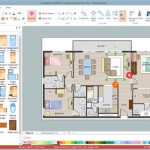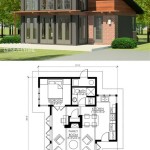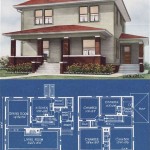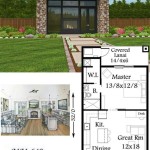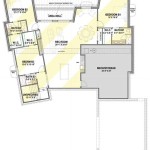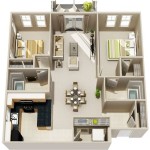How To Find House Plans
The process of finding suitable house plans is a critical initial step in any home construction or renovation project. Selecting the right set of plans impacts everything from the overall cost and timeline of the build to the long-term livability and functionality of the finished dwelling. A systematic and informed approach to sourcing and evaluating house plans is therefore essential for a successful outcome. This article outlines key strategies and resources to aid in the search for house plans that align with specific needs and preferences.
The complexity of finding the perfect house plan is often underestimated. Individuals embark on this search with varying levels of experience, ranging from first-time homebuyers to seasoned developers. Regardless of experience, the sheer volume of available plans, coupled with the numerous factors to consider, can feel overwhelming. Defining a clear budget, understanding local building codes, and prioritizing desired features are all crucial steps that precede the actual search for plans. Without a solid foundation, the search process can become inefficient and potentially lead to costly mistakes later in the construction phase.
Furthermore, the advent of online resources has revolutionized the way house plans are accessed. While the internet offers unparalleled convenience and a vast selection, it also presents challenges. Discerning reputable sources from unreliable ones, verifying the accuracy of plan details, and understanding the limitations of online representations are all critical considerations. Therefore, a balanced approach that combines online research with professional consultation is often the most effective strategy.
Defining Needs and Priorities
Before initiating the search for house plans, a thorough assessment of needs and priorities is essential. This involves considering various factors related to lifestyle, budget, and site conditions. A clear understanding of these elements will significantly narrow down the options and streamline the search process.
One of the first steps is to determine the desired size and layout of the house. This involves evaluating the number of bedrooms and bathrooms required, the need for specific spaces such as a home office or recreation room, and the preferred arrangement of living areas. Consider the current and future needs of the occupants. Will the house need to accommodate a growing family, aging parents, or frequent guests? Thoughtful consideration of these factors will ensure that the house plan meets long-term requirements.
Budget constraints are another critical factor. The cost of building a house varies significantly depending on the size, design complexity, and materials used. Establishing a realistic budget early in the process will help to focus the search on plans that are within financial reach. It is important to factor in not only the cost of the plans themselves but also the cost of construction, permits, and other associated expenses. Obtaining preliminary estimates from builders or contractors can provide valuable insights into the potential costs associated with different house plans.
Site conditions also play a crucial role in selecting appropriate house plans. The topography of the land, soil conditions, and local climate all influence the suitability of different designs. For example, a sloped lot may require a house plan with a walkout basement, while an area prone to flooding may necessitate a raised foundation. It is advisable to consult with a surveyor or geotechnical engineer to assess the site conditions and identify any potential challenges or limitations. The local climate will influence factors such as insulation requirements, window placement, and the type of heating and cooling systems needed. Understanding these factors will help to select a house plan that is both energy-efficient and suited to the specific environment.
Finally, lifestyle considerations should be taken into account. Evaluate how the home will be used on a daily basis. Do the occupants prefer open-concept living, or do they value more defined and separate spaces? Are there specific hobbies or activities that require dedicated areas, such as a workshop or studio? Consider the amount of time spent outdoors and whether features such as a large deck or patio are desired. A house plan that aligns with the lifestyle of the occupants will enhance their enjoyment and satisfaction with the home.
Exploring Resources for House Plans
Once needs and priorities have been defined, the next step is to explore the various resources available for finding house plans. These resources range from online databases and catalogues to architectural firms and design professionals. Each option offers its own advantages and disadvantages, and the best approach will depend on individual preferences and requirements.
Online house plan databases are a popular option for many homeowners. These websites typically offer a vast selection of plans in a variety of styles and sizes. Users can often filter their search based on criteria such as square footage, number of bedrooms, architectural style, and budget. Some websites also offer customization options, allowing users to modify existing plans to better suit their needs. However, caution is advised when using online databases. It is important to verify the credentials of the website and the quality of the plans. Look for websites that offer detailed plan descriptions, high-resolution images, and customer reviews. It is also advisable to consult with a building professional to review the plans and ensure that they comply with local building codes.
Architectural firms and design professionals offer a more personalized approach to finding house plans. Working with an architect allows for the creation of a custom design that is tailored to specific needs and site conditions. An architect can also provide valuable guidance on materials selection, energy efficiency, and other design considerations. While hiring an architect is generally more expensive than purchasing pre-designed plans, the benefits can outweigh the costs, particularly for complex or challenging projects. An architect can provide expert advice, ensure that the design meets all applicable regulations, and help to maximize the value and livability of the home.
Home builders and contractors often have access to a range of house plans that they can offer to their clients. Some builders specialize in specific architectural styles or construction methods, and they may have a library of plans that reflect their expertise. Working with a builder who already has experience with a particular plan can streamline the construction process and reduce the risk of unexpected problems. However, it is important to ensure that the builder is reputable and has a proven track record of delivering high-quality work. Obtain references from previous clients and review their portfolio of completed projects.
Home design magazines and books can also be a valuable source of inspiration and ideas. These publications often feature a variety of house plans in different styles, along with detailed floor plans and photographs. While these plans may not be immediately available for purchase, they can provide a starting point for discussions with an architect or designer. Reviewing different floor plans and design features can help to clarify personal preferences and identify elements that are important to incorporate into the final design.
Evaluating and Customizing House Plans
After identifying a few potential house plans, the next step is to carefully evaluate them and determine whether they meet specific needs and requirements. This involves reviewing the plan details, considering potential modifications, and consulting with building professionals to assess the feasibility and cost-effectiveness of the design.
Carefully review the plan details, including the floor plans, elevations, and structural drawings. Pay attention to the dimensions of rooms, the layout of circulation paths, and the location of windows and doors. Ensure that the plan meets accessibility requirements, if applicable, and that it provides adequate storage space. Evaluate the energy efficiency of the design, considering factors such as insulation levels, window glazing, and the orientation of the house on the site. Look for plans that incorporate passive solar design principles to maximize natural lighting and reduce energy consumption.
Consider potential modifications to the plans to better suit specific needs and preferences. Most house plans can be customized to some extent, although the amount of customization will vary depending on the complexity of the design and the flexibility of the architect or designer. Common modifications include changing the size or layout of rooms, adding or removing windows and doors, and altering the exterior finishes. It is important to discuss any desired modifications with a building professional to ensure that they are structurally sound and comply with local building codes. Significant modifications may require a re-engineering of the structural components of the house, which can add to the overall cost and timeline of the project.
Consult with building professionals, such as structural engineers, mechanical engineers, and energy consultants, to assess the feasibility and cost-effectiveness of the design. A structural engineer can review the plans to ensure that they meet all applicable safety standards and that the house is structurally sound. A mechanical engineer can evaluate the heating, cooling, and ventilation systems to ensure that they are efficient and comply with local energy codes. An energy consultant can provide recommendations for improving the energy efficiency of the design and reducing long-term operating costs.
Finally, obtain multiple bids from qualified contractors to estimate the cost of construction. The cost of building a house can vary significantly depending on the location, materials used, and the complexity of the design. Obtaining multiple bids will allow for comparing prices and assessing the value offered by different contractors. Ensure that the bids are detailed and include all aspects of the construction process, including labor, materials, permits, and other associated expenses. Carefully review the bids and ask clarifying questions to ensure that there are no hidden costs or surprises. The selection of a reputable and experienced contractor is crucial for the success of any home construction project.

9 Ways To Find Floor Plans Of An Existing House Blueprints Archid

5 Tips To Help You Find The Perfect House Plan Designers

Find House Plans For Your Old Blueprint Search Nethouseplansnethouseplans

How To Find Building Plans For My House Architecture Design Plan

9 Ways To Find Floor Plans Of An Existing House Blueprints Archid

9 Ways To Find Floor Plans Of An Existing House Blueprints Archid

How To Find Floor Plans For A Smart House In 2024

How To Find House Plans Using Our Quick Search Tool The Plan Collection

Ultimateplans Com Home Plans House Floor Find Your Dream Plan From The Nation S Fin Shed Diy

Archimple Finding Building Plans And Floor For Your House Tips Resources

